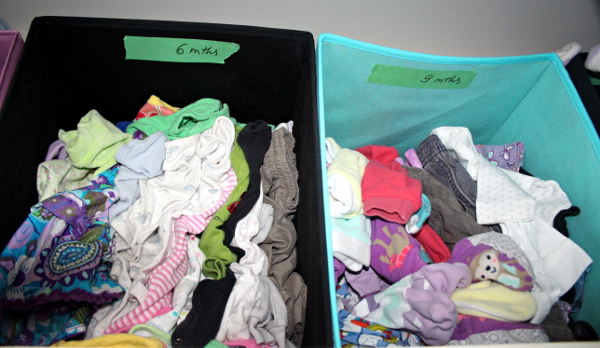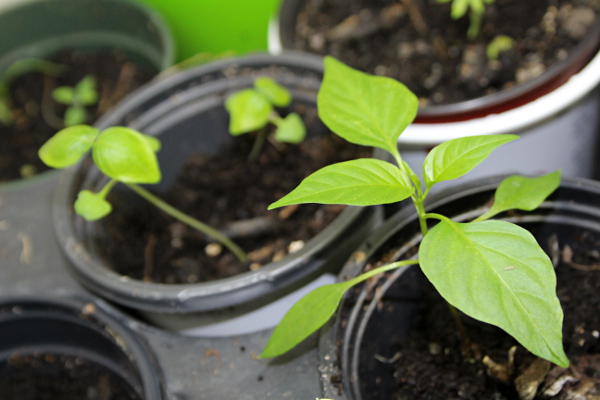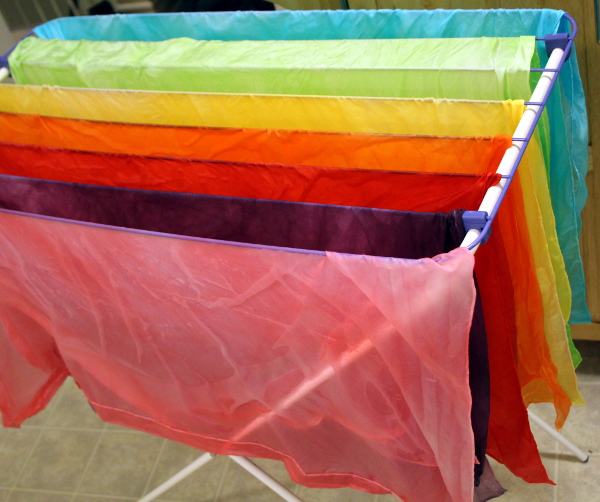I have been unfolding after the move – I feel like a wound spiral that is finally let go. I have my own place, where my decisions will be long-lived and I am free to make them, independent of any landlord. There are so many things I’d like to improve and touch up. But first I need to unpack everything and organize the necessities without significant impact to daily routines on which the children depend. So here is what worked for me:
Unpacking tips
Unpack essentials first:
- Soap and towels need to be there even during the move, so that people can wash and dry their hands.
- Kitchen – food, freezer food, cutlery, plates, pots, openers, storage containers. It helps to cook and freeze a few meals in advance.
- Napkins, tissues, and toilet paper stashed in abundance everywhere they are likely to be needed, so you don’t have to go through boxes to find a roll of toilet paper or a napkin with a messy baby in your arms.
- Daily care essentials: toothpaste and toothbrushes, shampoo, combs.
- A few toys and children’s books
- Bedding
Easy way to determine essentials: go through your typical weekday and your typical weekend day, list everything each family member will definitely or likely need. Ensure to unpack those things first (ideally you’d pack them last and they are in an easily accessible location). Keys, wallet, documents, diapers, wipes, changes of clothes for the kids and adults, medication/supplements, lunch boxes, water bottles and whatever else will be needed on a daily basis.
On the day of the move, make beds and set out changes of clothes and bath supplies/toys — bath time and bed time are not going to wait. In our case, this meant setting up two change tables (one upstairs and one downstairs) for the baby with diapers, cloth wipes, spray bottle with wipe solution and clothing. For the older child, we put a dresser into his wardrobe and filled it with several pairs of pants, t-shirts, underwear and socks.
Determine where the large pieces of furniture, appliances and electronics will be and set them up as soon as you can. Until that’s done, tackling boxes is hard, since you have nowhere to unpack them into. It also helps to not be tripping over the furniture haphazardly strewn throughout the house.
Once essentials are unpacked, determine your priorities, taking into account any timelines. For example:
I work from home, so I needed my desk with the computer, printer, phone, and the Internet connection set up.
I run a handmade jewellery business from home, so I needed my beading and packaging supplies unpacked and set out for easy access in the first couple of days, to not disrupt filling Etsy orders. (Curiously enough, after a week with no orders prior to our move, the only day we did not have an Internet connection, 3 orders have come in and had to be filled right away.)
We have two busy children, so we needed to ensure the play room is one of the first things to be arranged and unpacked, letting them play. To be fair, the most enjoyment they seem to have is helping us open the boxes of books, but they are also engaged with their own space and the forgotten toys to explore in the play room.
I had a large area of my kitchen floor taken up by plant seedlings that needed to be transplanted (and the floor needed to be freed up for the dinner table), so getting the soil, building the permaculture garden towers and the permaculture herb spiral, creating beds for the remaining seedlings, and hardening off the plants have been a priority from the start. So shaping up the garden had to be done while the house was still in boxes. I did quite enjoy the process though — it made for a nice break from unpacking, letting us play outside in the fresh air and come back in with new energy to tackle more boxes.
Freeing up enough space in the living room to maneuver the furniture and fasten the book cases to walls gave us freedom to unpack our knowledge cube of over 60 boxes of books and the fragile china and glasses that occupied a large part of what shall be the zen room — a small den on the ground floor that got filled to the brim with all sorts of boxes. Kids got their books too, which made for a fun unpacking experience interrupted by lots of quiet time engrossed in whatever book their eyes happened to fall upon.
Once the big pieces and daily necessities are set up, the organization can take place with less stress.
Do laundry as you go — when you have piles of clothes to deal with, it’s easier to split things into whites, brights, woolens, etc. They’ll be easier to sort once they are clean as well. Don’t bother about ironing at this point. What matters is that things in your wardrobe are clean and can easily be found.
Take this opportunity to donate the items you no longer need. Sometimes it’s hard to do that before you move because you don’t know whether you might need something at your new house. For instance, until you spend a few nights there, you won’t know whether you would need to keep your small space heater (not so relevant in the summer, but you get the point) or whether it’s made obsolete by an excellent furnace (which will never break down, right?).
Make use of organizational aids such as baskets, bins, shoe and wardrobe containers, shelves, and whatever else will make sorting, storing, and finding things easier. We’ve taken a couple trips to Ikea and I’ve found a few of their closet organizing items very handy. All of my children’s shoes, from size 4 to size 10, have filled one and a half shoe organizer, whereas it took 3 boxes to move all of them. Here’s what I’ve done to organize all the children’s clothing, in about 3 hours.
Remember what needs to be done daily — watering indoor plants (and the garden), food preparation, laundry. Take care of those things first and follow with unpacking a few boxes at a time when you have a few minutes. Before you know it, you’ll be through.
Take time to consider the big picture as well. Do you need to change locks to ensure no one you don’t know has access to your house? Do you want to replace light bulbs to more efficient ones to save energy? Same goes for shower heads and toilets. Perhaps consider a water filter for the house, to get rid of pharmaceuticals and other unwanted chemicals in your drinking and bathing water. Check the furnace filter and replace it if needed. If the air quality is not great, consider cleaning the ducts. Figure out when garbage, recycling, and compost pick up happens in the new neighbourhood. Change your address by contacting all the relevant organizations. Get to know the place and its quirks. Ensure there is sufficient lighting. Hang up curtains to get some privacy. Replace batteries in fire and carbon monoxide alarms…
There is so much to do. Take it one room and one day at a time. Remember to step outside and breathe. You have lots of time to make this place yours. Be gentle to it and yourself in the process.













 To be resilient in the face of changes, one must let go of the need to cling to familiar and give in to uncertainty of life. Just as with good sex or a good birth, feel the rhythm, follow it, listen to your senses, and ride that wave. Let go and you’ll be more in control and feel more pleasure from the process than if you try to resist the flow. You cannot control life circumstances.
To be resilient in the face of changes, one must let go of the need to cling to familiar and give in to uncertainty of life. Just as with good sex or a good birth, feel the rhythm, follow it, listen to your senses, and ride that wave. Let go and you’ll be more in control and feel more pleasure from the process than if you try to resist the flow. You cannot control life circumstances. 




 We are moving, and this means that for the past month and for the next couple of weeks we are living among boxes, and in constantly changing surroundings. When you have children, adults with hobbies, a full-fledged beading studio, a large library, a network, and a pantry, it makes for quite a few things to pack. A minimalist friend of mine came to visit during the early stages of packing and exclaimed: “I don’t know how you can stand it, I’d go crazy having to live like this for even a week!” Any change in routine is stressful, full of unknowns, and can be downright scary for children. I have come up with ways to minimize everyone’s stress and make packing more fun.
We are moving, and this means that for the past month and for the next couple of weeks we are living among boxes, and in constantly changing surroundings. When you have children, adults with hobbies, a full-fledged beading studio, a large library, a network, and a pantry, it makes for quite a few things to pack. A minimalist friend of mine came to visit during the early stages of packing and exclaimed: “I don’t know how you can stand it, I’d go crazy having to live like this for even a week!” Any change in routine is stressful, full of unknowns, and can be downright scary for children. I have come up with ways to minimize everyone’s stress and make packing more fun.












![never-ending-sotry-as-adult-1393712914[1]](http://fingeringzen.com/wp-content/uploads/2015/01/never-ending-sotry-as-adult-13937129141.jpg)

















 This past week has marked the seventh wedding anniversary for me and my partner. It came just a few days after our second baby turned a year old. To my surprise, most people reacted strangely to me saying that I feel a strong need to acknowledge and celebrate this milestone. They either congratulated us on avoiding relationship problems so far or mentioned a “seven-year itch” with a knowing smirk.
This past week has marked the seventh wedding anniversary for me and my partner. It came just a few days after our second baby turned a year old. To my surprise, most people reacted strangely to me saying that I feel a strong need to acknowledge and celebrate this milestone. They either congratulated us on avoiding relationship problems so far or mentioned a “seven-year itch” with a knowing smirk.

